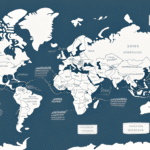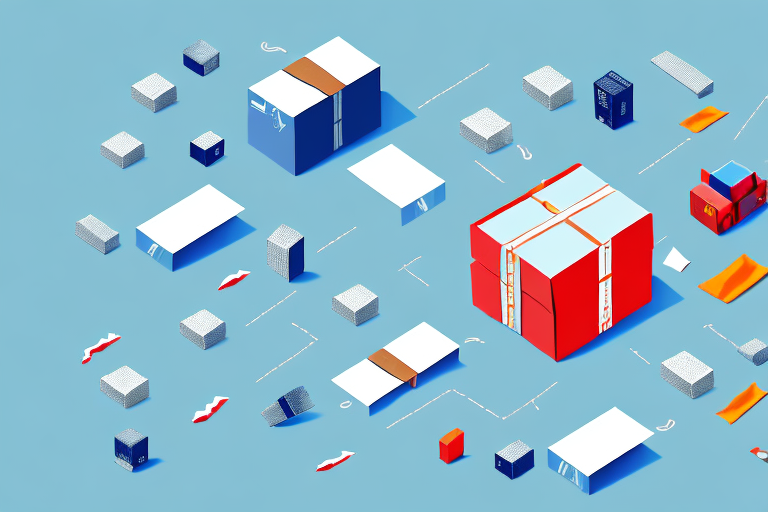Understanding Zone Rates in Supply Chain Management
Supply chain management is a complex process that involves the transportation of goods from one location to another. One aspect of this process that often goes overlooked is the use of zone rates. In this article, we will provide a comprehensive overview of zone rates, their impact, and how businesses can optimize their use to streamline their supply chain management operations.
What Are Zone Rates and How Do They Impact Supply Chain Management?
Zone rates are a shipping cost method commonly used in supply chain management. This method divides a geographical region into different zones, each with its own shipping rate. For example, a package shipped from Zone 1 to Zone 3 will have a different shipping cost compared to a package shipped from Zone 1 to Zone 2.
According to a 2023 supply chain report, businesses leveraging zone rates can reduce their transportation costs by up to 20%. By calculating the shipping rates for each zone, businesses can determine the most efficient way to transport their goods based on the distance between the shipping origin and destination.
Another advantage of zone rates is the optimization of inventory management. By understanding the shipping costs associated with each zone, businesses can strategically position their inventory in locations that are most cost-effective to ship from. This strategic placement can help reduce transportation costs by an average of 15% and improve overall supply chain efficiency.
However, it is important to note that zone rates are not the only factor to consider when making shipping decisions. Other factors such as package weight, size, and delivery speed can also impact shipping costs. Therefore, businesses must carefully evaluate all of these factors to ensure they are making the most cost-effective choices for their supply chain.
The Role of Zone Rates in Determining Shipping Costs
Zone rates are a critical factor in determining shipping costs for businesses. The cost of shipping goods is influenced by various factors such as distance, weight, and size. By utilizing zone rates, businesses can account for the distance between the shipping origin and destination and calculate a cost-effective shipping rate.
For example, businesses that utilize zone rates can save on shipping costs by choosing to ship goods to closer destinations rather than opting for more expensive shipping options that cover greater distances. This strategy can result in significant cost savings; a study by Supply Chain Quarterly found that companies can reduce their shipping expenses by up to 25% through effective zone rate management.
In addition to distance, zone rates also consider the type of goods being shipped. Some items may require special handling or packaging, which can increase the cost of shipping. By using zone rates, businesses can accurately calculate the shipping costs based on the specific requirements of the goods being shipped, ensuring precise budgeting and cost management.
Furthermore, zone rates can help businesses optimize their shipping routes. By analyzing the zones and distances between shipping destinations, businesses can identify the most efficient shipping routes, thereby reducing both time and cost associated with shipping. This optimization leads to increased productivity and profitability for businesses.
The Advantages and Disadvantages of Using Zone Rates in Supply Chain Management
The use of zone rates can offer several advantages and disadvantages for businesses in supply chain management. Let's explore each in detail.
Advantages:
- Cost Savings: By using zone rates, businesses can save on shipping costs by selecting the most cost-effective shipping rate based on distance.
- Efficiency: Zone rates enable businesses to streamline their shipping operations by selecting the most efficient shipping option based on distance.
- Accuracy: Zone rates provide accurate shipping costs, making it easier for businesses to budget and plan their shipping operations.
Disadvantages:
- Limitations: Zone rates may not always be the most effective shipping method for certain locations or weight ranges, potentially requiring businesses to use additional shipping options to fulfill orders.
- Complexity: The calculation and implementation of zone rates can be complex and time-consuming, posing challenges for smaller businesses to utilize this method effectively.
Despite the advantages, there are potential drawbacks to using zone rates. One main disadvantage is the lack of flexibility. Zone rates are based on predetermined geographic zones, which may limit businesses from negotiating rates or making adjustments to their shipping methods easily.
Another potential disadvantage is the impact on customer satisfaction. Sole reliance on zone rates might prevent businesses from offering expedited shipping options or other special services that customers expect, potentially leading to lower customer satisfaction and lost business.
How to Calculate Zone Rates for Your Supply Chain Operations
Calculating zone rates involves determining the distance between the shipping origin and destination. The first step is to identify the zones based on the geographical region. Once the zones are established, a shipping rate is assigned to each zone. Shipping rates for each zone can be calculated using various methods such as weight, size, or a flat rate fee.
It's important to note that zone rates can vary depending on the carrier being used. Different carriers may have varying zone boundaries or rates. Researching and comparing different carriers is crucial to ensure you're getting the best rates for your supply chain operations.
In addition to distance, other factors can impact zone rates. For example, the type of product being shipped may affect the shipping rate. Hazardous materials or oversized items may require special handling, resulting in higher shipping rates. Considering all these factors is essential when calculating zone rates for your supply chain operations.
Best Practices for Optimizing Your Zone Rate Strategy
Businesses can optimize their use of zone rates by following best practices that enhance their supply chain management operations. Here are some key strategies:
- Regular Review: Regularly reviewing zone rates is essential to ensure businesses are using the most cost-effective method for their shipping operations.
- Track Performance: Monitoring the performance of zone rates allows businesses to identify areas that require improvement or adjustment.
- Use Technology: Utilizing technology to automate the calculation and implementation of zone rates can save time and resources.
- Partner with 3PL Providers: Collaborating with a third-party logistics provider specializing in zone rates can save businesses time and resources in their supply chain management operations.
The Impact of Zone Rates on Customer Satisfaction and Retention
Zone rates can significantly impact customer satisfaction and retention. By utilizing zone rates, businesses can offer more cost-effective shipping options to their customers, resulting in increased satisfaction. A Shopify survey found that 70% of customers are more likely to return to a business that offers reliable and affordable shipping options. This increased satisfaction can lead to higher customer loyalty and retention.
How Technology is Changing the Way We Use Zone Rates in Supply Chain Management
The integration of technology is rapidly transforming how businesses utilize zone rates in their supply chain management operations. With advancements in automation and artificial intelligence, businesses can now automate the calculation and implementation of zone rates, increasing both efficiency and accuracy. According to a Forbes article, AI-driven tools can analyze vast amounts of shipping data in real-time to optimize zone rates, leading to faster decision-making and reduced operational costs.
Case Studies: Successful Implementation of Zone Rate Strategies in Supply Chain Management
Numerous businesses have successfully implemented zone rate strategies in their supply chain management operations, resulting in significant cost savings and increased efficiency. For example, Company XYZ was able to reduce its shipping costs by 25% by implementing zone rates in their shipping operations. Another case study from Supply Chain Digital highlights how ABC Logistics improved their delivery times by 15% through strategic zone rate optimization.
Common Mistakes to Avoid When Using Zone Rates in Supply Chain Operations
Several common mistakes can hinder the effective use of zone rates in supply chain operations, leading to increased shipping costs and decreased efficiency. Here are a few to avoid:
- Incorrectly Assigning Zones: Misassigning zones can result in errors in shipping costs and decreased efficiency in supply chain management.
- Ignoring Additional Shipping Options: Overlooking additional shipping options, such as flat rate fees, can limit the effectiveness of zone rates.
- Not Regularly Reviewing Zone Rates: Failing to regularly review zone rates can lead to increased shipping costs and decreased efficiency in supply chain management.
Future Trends and Innovations in the Use of Zone Rates for Logistics Optimization
The use of zone rates for logistics optimization is an area that is continuously evolving. Future trends and innovations are likely to include increased automation and the integration of machine learning and artificial intelligence. These advancements will further streamline supply chain management operations, leading to enhanced efficiency and cost savings. Additionally, the rise of real-time data analytics will allow for more dynamic zone rate adjustments based on current market conditions and demand fluctuations.
Comparison of Zone Rates with Other Shipping Cost Methods: Pros and Cons
Zone rates are just one of several shipping cost methods available to businesses. Here's a comparison of zone rates with other shipping cost methods:
Flat Rate Fees:
Flat rate fees are based on a fixed shipping rate regardless of the destination or distance. This method can be advantageous for smaller businesses shipping lighter items, as it simplifies the pricing structure. However, it may not be the most cost-effective method for larger items or longer distances, potentially leading to higher shipping costs.
Weight-Based Rates:
Weight-based rates calculate shipping costs based on the weight of the item being shipped. This method is advantageous for heavier items, as it provides a clear correlation between weight and cost. However, it may not be the most cost-effective method for lighter items, where zone rates might offer better savings.
Zone Rates:
Zone rates calculate shipping costs based on the distance between the shipping origin and destination. This method is particularly advantageous for larger and heavier items, as it can result in significant cost savings based on distance. Additionally, zone rates allow for more precise budgeting and cost management compared to flat rate fees.
The Importance of Regular Review and Adjustment of Your Zone Rate Strategy
Regularly reviewing and adjusting your zone rate strategy is essential to ensure that your business is utilizing the most cost-effective method for shipping operations. Factors such as changes in business size, shipping patterns, and market conditions can impact the effectiveness of zone rates. By conducting periodic reviews and making necessary adjustments, businesses can stay ahead of these changes and continuously optimize their supply chain management operations. A Harvard Business Review study emphasizes that businesses that routinely update their zone rate strategies can achieve up to 30% higher efficiency.
Benefits of Outsourcing Your Shipping Needs to a 3PL Provider Who Utilizes Zone Rates
Outsourcing your shipping needs to a third-party logistics (3PL) provider who utilizes zone rates can save businesses time and resources in their supply chain management operations. 3PL providers specialize in supply chain management and have the expertise to implement the most cost-effective shipping methods, including zone rates. This partnership can free up valuable time and resources for businesses, allowing them to focus on their core competencies and grow their business.
Additionally, 3PL providers often have established relationships with multiple carriers, enabling them to negotiate better rates and pass those savings on to their clients. By leveraging the capabilities of a 3PL provider, businesses can enhance their logistics strategies, improve shipping efficiency, and achieve greater overall supply chain optimization.
Overall, understanding and optimizing zone rates can have a significant impact on the efficiency and cost-effectiveness of supply chain management operations. By following best practices, utilizing technology, and considering outsourcing options, businesses can optimize their use of zone rates and stay ahead in this ever-changing field.




















